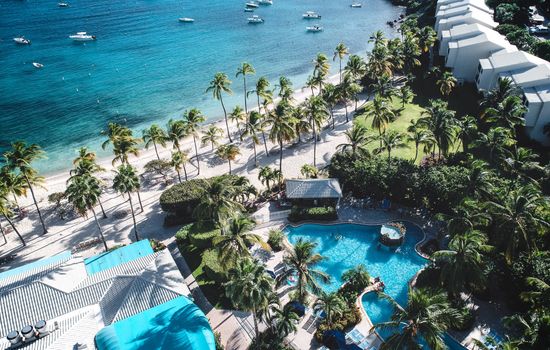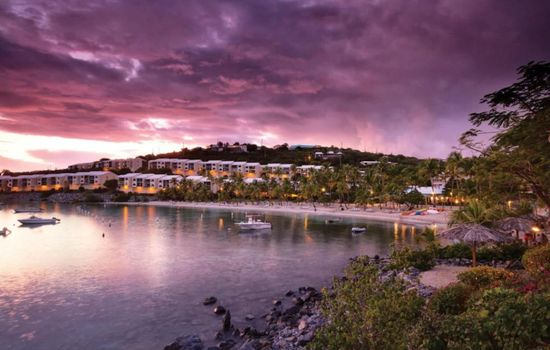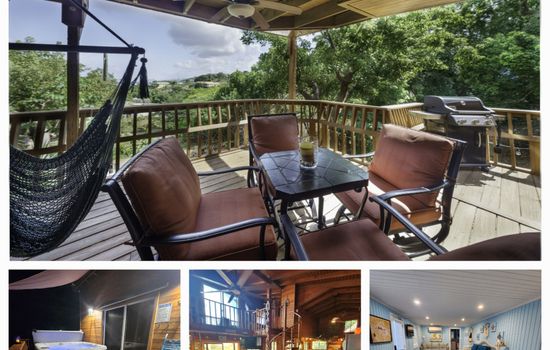The visitor center at Christiansted National Historic Site is open from 8:30am to 4:30pm, seven days a week, except for Thanksgiving and Christmas Day.
The entrance fee at Christiansted National Historic Site is $10 for adults 16 and older, valid for three days. Children under 16 are free. Annual passes and discounted options are available.
From Christiansted, drive east on Route 64 to Melvin Edwards Highway, then continue on Christiansted Bypass, turning left onto Hospital Street. Immerse yourself in 18th-century Danish colonial charm amidst historic structures and tropical beauty.
Parking at Christiansted National Historic Site is available in a lot near Fort Christiansvaern, open 8:00 a.m. to 4:30 p.m., free for now, no overnight parking. Limited space, no specific accommodations for RVs or motorcycles.__
Accessibility & permits
Emergency
- Cell service availability:Partial
Information not accurate?
Help us improve by making a suggestion.
Christiansted National Historic Site, situated on the enchanting island of St. Croix in the U.S. Virgin Islands, is a poignant testament to the region’s rich and complex history. Established in 1952, this historic site spans over 27 acres, centered around the Christiansted waterfront, where the past comes alive in the form of 18th- and 19th-century structures.
At the heart of the site stands Fort Christiansværn, a sturdy fortification built between 1738 and 1749, its stone walls bearing witness to the Danish colonial era. The Danish West India and Guinea Company Warehouse, constructed in 1749, serves as a somber reminder of the Triangular Trade, where enslaved Africans were auctioned off. The Church of Our Lord Sabaoth Steeple Building, with its elegant 1753 steeple, adds a touch of historical grandeur.
The landscape is dotted with other significant buildings, including the Customs House, the Scale House, and Government House, each telling a part of the story of Christiansted’s vibrant past. The wharf area, once a bustling hub of mercantile activity, now offers a serene backdrop for reflection on the island’s history.
Visitors can stroll along the waterfront, taking in the sights of the historic harbor, or participate in ranger-led tours that delve into the intricate web of colonial history and the lives of those who lived and traded here. Seasonal festivals and cultural events bring the site to life, while local artisans and nearby towns offer a glimpse into the contemporary heritage of the island.
For those seeking a deeper connection, local outfitters provide opportunities to explore the surrounding waters and enjoy the island’s natural beauty. Christiansted National Historic Site is not just a place to visit; it is an immersive experience that enriches the senses and deepens one’s understanding of the Caribbean’s historical and cultural tapestry.
- Area (mi²)
- 0.1
- Annual visitors
- 106 015
- Established year
- 1952
Top 3 Facts about Christiansted National Historic Site
From 1734 to 1803, this historic site was a key port in the Triangular Trade, where tens of thousands of enslaved Africans were transported across the Middle Passage, a journey of over 3,000 miles. The site includes the Danish West India and Guinea Company Warehouse, where slave auctions were held until the slave trade was outlawed in 1803.
This historic waterfront site, set on seven acres, is more than a testament to the past; it also hosts a variety of marine life. Sea turtles and vibrant reef fish inhabit the waters, while seabirds like the brown pelican and osprey soar overhead. The grounds themselves are dotted with tropical flora, including mangroves and seagrape trees, adding a lush backdrop to the 18th- and 19th-century structures. The eclectic blend of history and natural beauty makes for a captivating experience.
Surrounded by a narrow shelf, the harbor boasts vibrant turquoise waters, ideal for long, fringing coral reefs and patch reefs. The island’s landscape, formed from 80 million-year-old sedimentary rocks, features limestone exposed in the fertile central valley, a remnant of a coral reef from the Miocene epoch. Average temperatures hover at 79 degrees Fahrenheit, with an average rainfall of 55 inches, creating a lush and tropical environment.
Family programs
- Junior Ranger
- Ranger-led Tours
- Workshops & Hands-on Activities
- Living History & Cultural Demos
- Scavenger Hunts
- Arts & Crafts
Travel Tips
Plan Ahead
Visit during the dry season to avoid sudden showers. Allocate an afternoon to explore the historic fort, dungeons, and museum exhibits. Park in the on-site lot before 4:30 PM to avoid towing. Wear reef-safe sunscreen and a hat, and bring a snack or picnic. Rest at the picnic tables after walking the grounds. Enjoy local cafes and shops nearby after your visit.
Pack Appropriately
Pack light, breathable clothing, comfortable shoes, sunscreen, and a hat for sun protection. Bring a light jacket for cooler evenings and a rain jacket for occasional showers. For longer stays, include camping gear and layers for variable weather conditions.
Respect Wildlife
Keep a safe distance from wildlife, at least 25 yards for nonpredators and 100 yards for predators. Avoid feeding, loud noises, and sudden movements. Stay on marked trails and respect nesting areas to preserve the natural habitat. Pack out all trash and follow local guidelines.
Stay Informed
Stay on marked trails, avoid ledges and water areas, and check weather conditions. Follow park rules and signs. For emergencies, call 911 or park authorities. Stay informed to ensure a safe adventure.
Seasons
In spring, with temperatures in the 80s and gentle Caribbean breezes, explore historic grounds under West Indian mahogany trees. Enjoy picnics, ranger programs, and free admission on April 19 for National Park Week. Ideal for outdoor enthusiasts and history buffs.
Summer brings warm temperatures (85-90°F) and humid weather, but it’s a perfect time to enjoy outdoor activities. Experience Moonlight Movies on the lawn, or the lively Quelbe Tramp in July. Sunday Funday events offer family-friendly fun. Despite the heat, the Caribbean breeze and vibrant summer events make it an ideal time to visit.
Visit in fall for mild temperatures (80s-90s°F) and fewer crowds. Enjoy Moonlight Movies at the Fort in September and October, featuring free outdoor films under the stars. Perfect for a serene and culturally rich experience.
Visit from December to February for mild winters with temperatures between 73°F and 84°F, minimal rainfall, and a serene atmosphere, ideal for exploring historic structures and waterfronts.
Information not accurate?
Help us improve by making a suggestion.
Where to stay
Frequently Asked Questions
Ready to dive into what Christiansted National Historic Site has to offer? Let’s tackle some of the burning questions you might have as you plan your visit!
-
You should stay in Christiansted, the capital of St. Croix Island, to visit this historic site. Christiansted has been the central location since the Danish era of occupation from 1734 to 1917. The site is located on the Christiansted waterfront.
-
Dogs are not allowed at this national historic site, as they are prohibited from national park areas, including beaches and other facilities. There are some exceptions for service animals, but pets in general are not permitted.
-
Parking is currently free, but the National Park Service is considering reintroducing a daily parking fee. Free parking has been available for nearly a decade.
-
The site represents historical events such as the Danish economy and way of life from 1733 to 1917, including colonial administration, military and naval establishments, and international trade, particularly the slave trade which was active from 1734 to 1803. It also highlights religious diversity, architecture, skilled artisanship, and crime and punishment. Key structures include Fort Christiansvaern, the Danish West India & Guinea Company Warehouse, the Steeple Building, Danish Custom House, and the Scale House.







